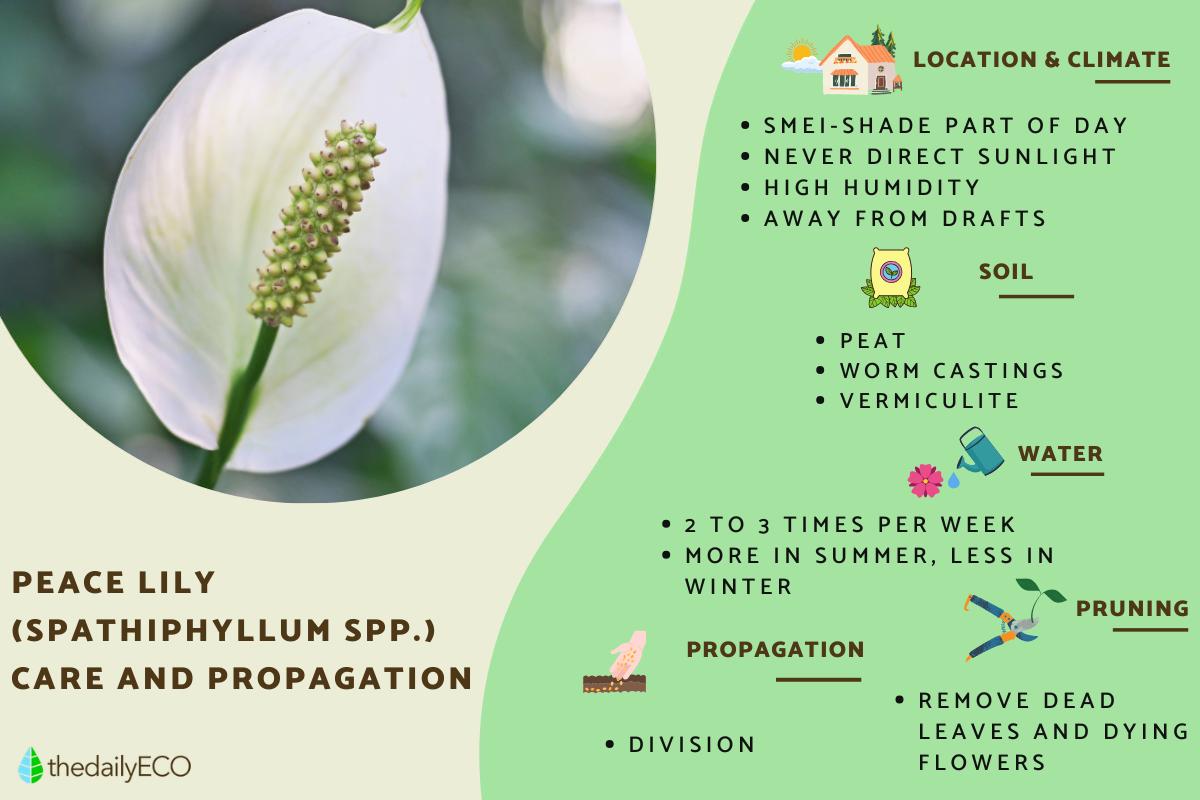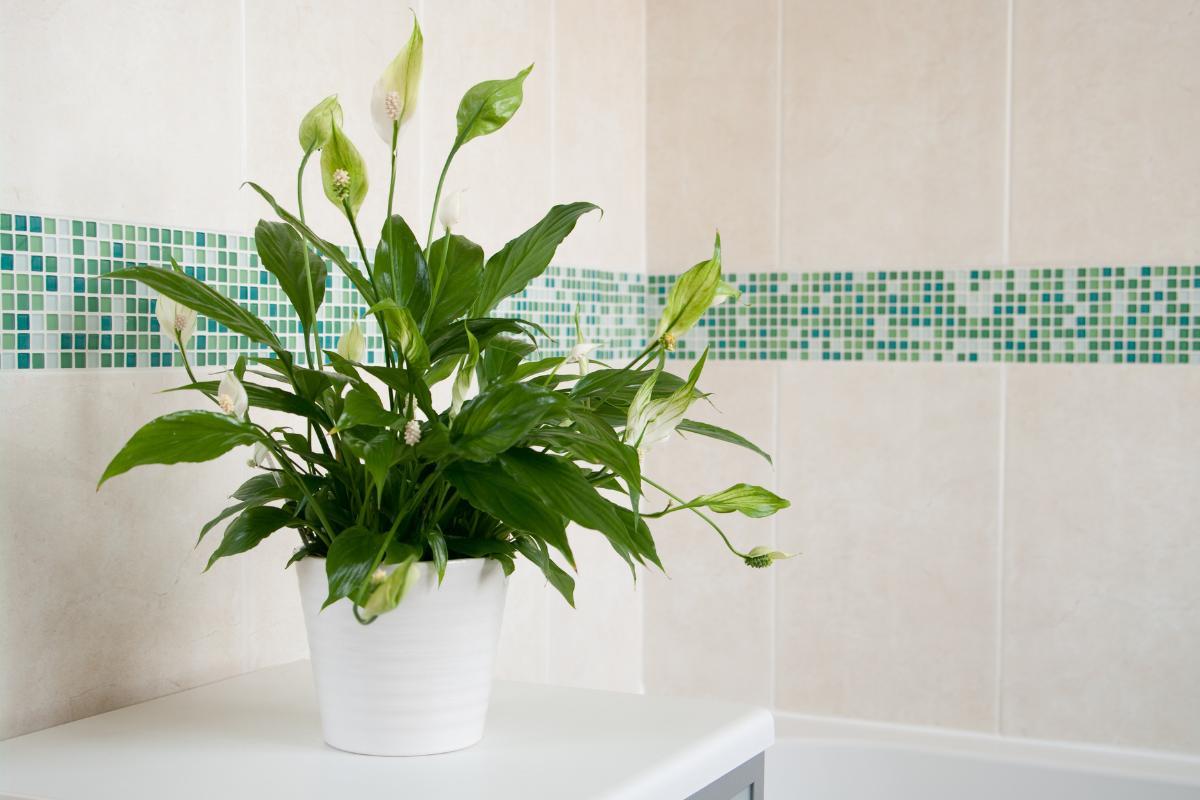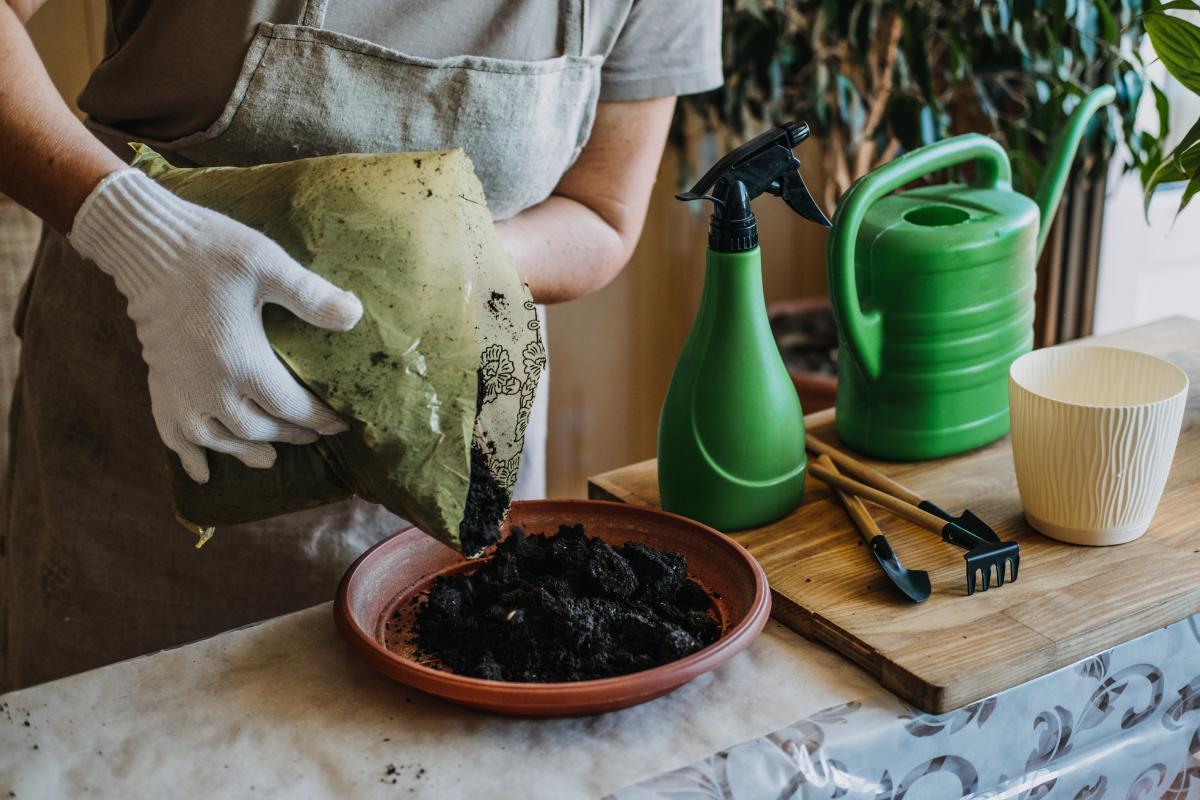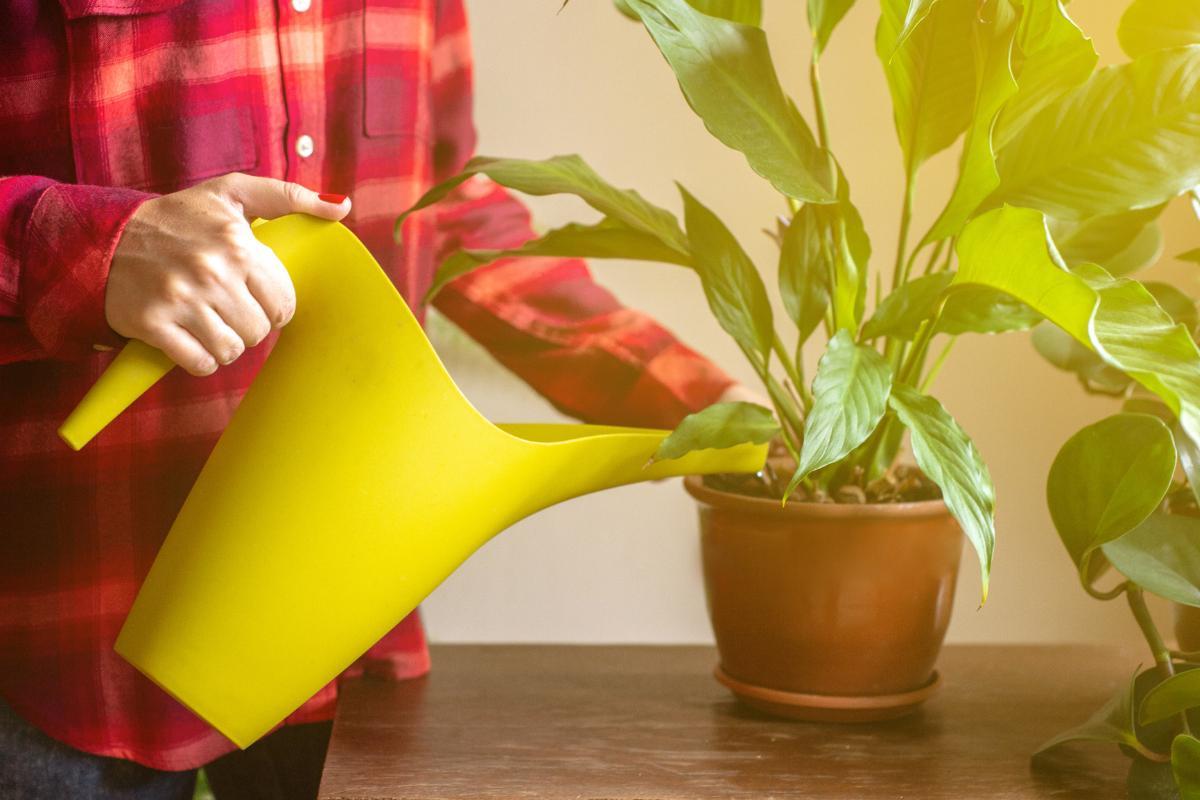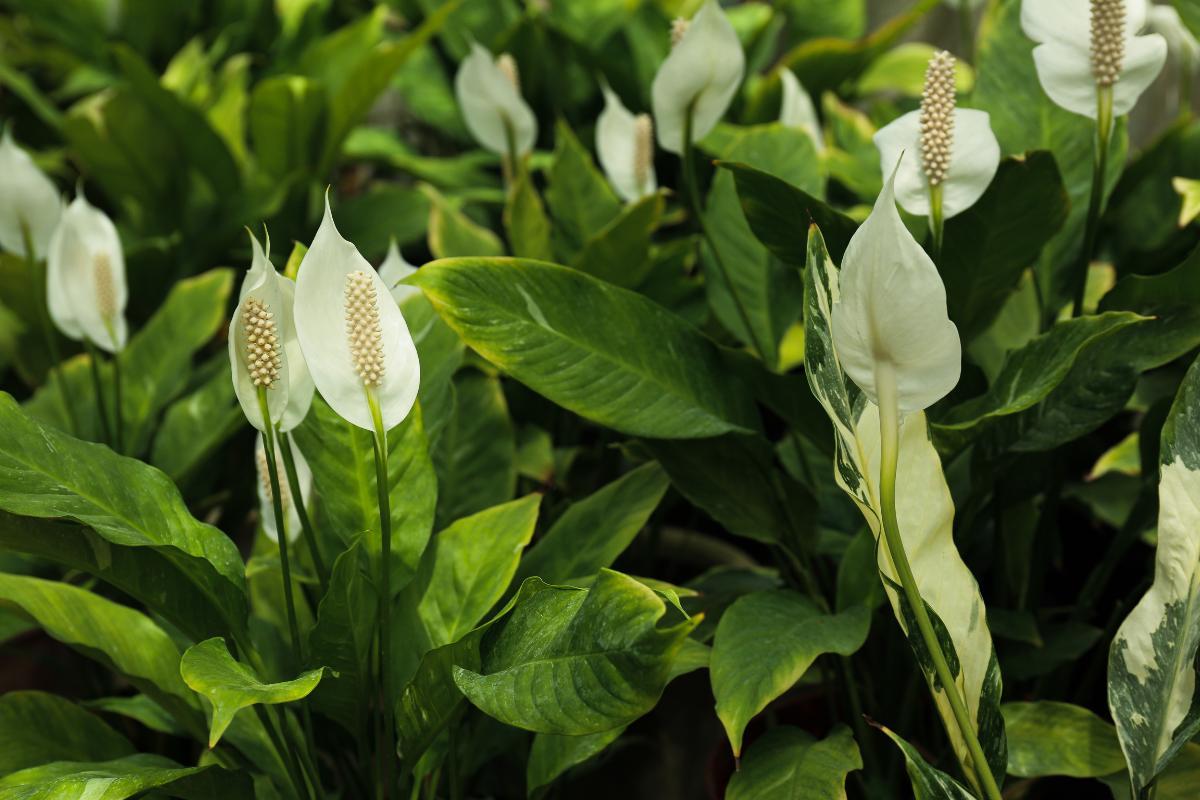Peace Lily Plant Care


Peace lilies are types of lily from the genus Spathiphyllum. Sometimes known as spath, peace lilies require semi-shade, warm temperatures, porous substrate, high watering and high ambient humidity. They are reproduced by division in spring. The conditions required for a healthy peace lily can be difficult to maintain when the plant is outdoors. For this reason, it is commonly kept as a houseplant. Keeping a peace lily indoors means you can better control factors such as humidity, temperature and watering. Learn the specifics with thedailyECO as we explain peace lily care and propagation indoors.
Characteristics of the peace lily (Spathiphyllum spp.)
Before we explain how to care for a peace lily, knowing the characteristics of this specific plant can help us to better care for it. The characteristics of peace lilies are as follows:
- These plants grow to about 24" (60 cm) in height, with shiny, lustrous, lanceolate leaves that grow directly from the base of the plant. These leaves measure between 4-10" (10-25 cm) in length. Despite its size and the beauty of its leaves, it is classified as a herbaceous plant.
- In addition to being cultivated for its aesthetic leaves, it also has decorative value because it produces tiny flowers which appear on a part of the plant called a spadix. This looks a little like a corn on the cob with the flowers appearing as textures on its vertical surface. It is surrounded by a white spathe, a type of modified leaf which looks like a flower, but is not.
- Flowering time ranges from spring to autumn, while the leaves are evergreen and maintain their green color all year round.
- Its roots are of the rhizome type, being very small and superficial.
If you would like to buy a peace lily houseplant for yourself, you can use the link below:
Peace lily light, temperature and location
The peace lily is a plant that requires indirect light and semi-shade, making it an excellent indoor plant. If it receives direct light, the leaves can burn. You must provide it with indirect light, meaning it should be kept in semi-shade for part of the day. While the peace lily can survive in complete shade, it will not produce its characteristic flowers. For this reason, it is recommended that it receive at least a little light during the day.
These indoor plants are native to tropical environments in Central America and the Pacific Islands, so their ideal growing temperature is between 70 and 77ºF (21ºC and 25ºC), but they can well tolerate up to 86ºF (30ºC). Care should be taken to ensure that it does not fall below 59ºF (15ºC) because it can die. In addition, the temperature must be stable because it does not tolerate sudden climactic changes. It is advisable to keep it away from drafts, heaters, radiators, air conditioners or open windows.
As it needs temperature stability, an environment with medium or high ambient humidity and some indirect light, one of the most common areas of the house to keep a peace lily is the bathroom. You can learn about other plants which can be kept in this room with our article on plants that absorb moisture.

Peace lily soil and fertilizer
The ideal substrate for the peace lily is a mixture of equal parts of worm castings and peat. Adding a handful of vermiculite will help to ensure it has good drainage to avoid flooding.
Being a flowering plant, the peace lily can benefit greatly from fertilizer. You can use a universal liquid fertilizer which is applied once a month during the growing season that ranges from spring to summer. You can also add a layer of worm castings as mulch to replenish the nutrients that it has already consumed.
You can make your own worm castings at home with our handy guide.

Watering a peace lily
Since the peace lily is a tropical plant, it requires the substrate to be constantly moist. Watering is 2 to 3 times a week is the general guideline. The amount can vary depending on where you live, but make sure it is adequate so that the soil does not become waterlogged. In spring and summer, it will require more water than in autumn and winter when less evaporation occurs.
While 2 to 3 times per week is the ideal watering, you should know that this plant tolerates a period of drought very well. If it is left to become dry, signs of damage will quickly become evident. The minimum watering you should give it is once every two weeks.
It is necessary to have good humidity, something which is different from watering. It is recommended to place the pot on a plate with stones that contain water so there will be evaporation near your plant. You can also spray the leaves regularly to help maintain humidity.
Improper watering is a common reason a plant is unable to bloom. We share the reasons why a peace lily is not flowering in our related guide.

Pruning a peace lily
Leaves and stems of the peace lily that are dry or have been attacked by pests should be removed to prevent the plant from wasting energy on tissues that it will soon lose. It is also recommended to remove flowers that are beginning to dry. Removing elements of the plant that are no longer healthy helps reduce the proliferation of fungi and bacteria. Pruning should be done with gloves and long sleeves as parts of the peace lily contain insoluble calcium oxalate crystals which can be toxic if ingested or get on the skin.
Our related list shares some of the most toxic trees for humans.
How to propagate a peace lily
We need to propagate an indoor peace lily by division. Division of the peace lily should be done in spring, using the following guidelines:
- Dig up the entire plant from its pot when it has shoots, i.e. more than one stem.
- Separate a shoot very carefully from the base.
- Place in a new pot with the substrate prepared as mentioned above. Water regularly and monitor its progress.

Peace lily diseases and pests
Fortunately, the peace lily is a plant that is not very prone to diseases or pests. However, it is not invincible. Some of the problems a peace lily can face include:
- Yellow leaves: when a peace lily receives too much exposure to light or excessive watering, its leaves can turn yellow. You can learn how to deal with this problem in our article on why a pothos has yellow leaves.
- Not blooming: if your plant is not flowering , it is most likely due to a lack of light. Secondary reasons are a lack of nutrients or a lack of water.
- Root rot: there may be root rot due to the high water demand. To avoid this, try to keep the substrate well prepared from the moment you have your plant. This will save you from doubts about whether the roots are in poor condition due to poor drainage.
- Pest: common pests for peace lilies are the red spider, a mite that produces cobwebs and yellow spots on the leaves. This can lead to weakening of the plant. Thee can be eliminated by regulating humidity and watering, as they appear when the environment is very dry.
Now you know how to care for an indoor peace lily, you may want to learn what other types of semi-shade plants work best indoors.
If you want to read similar articles to Peace Lily Plant Care, we recommend you visit our Plant care and cultivation category.
- Houseplant Care, The. (1998). Argentina: Imaginador.
- Burés Pastor, S. (2022). 50 Perfect Plants. Spain: Larousse.
- Royal Horticultural Society. (n.d.). Spathiphyllum 'Chopin'. https://www.rhs.org.uk/plants/304426/spathiphyllum-chopin/details





